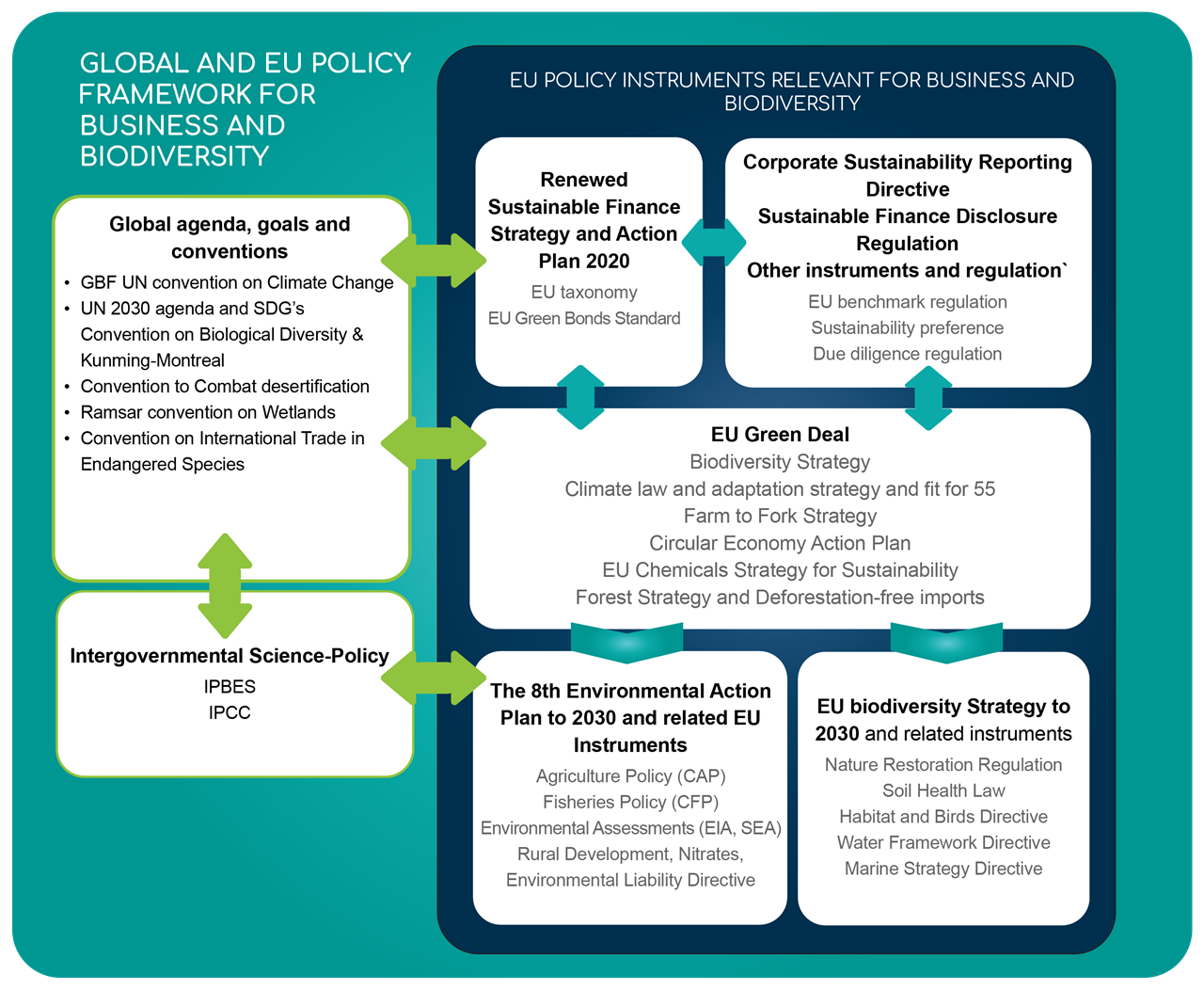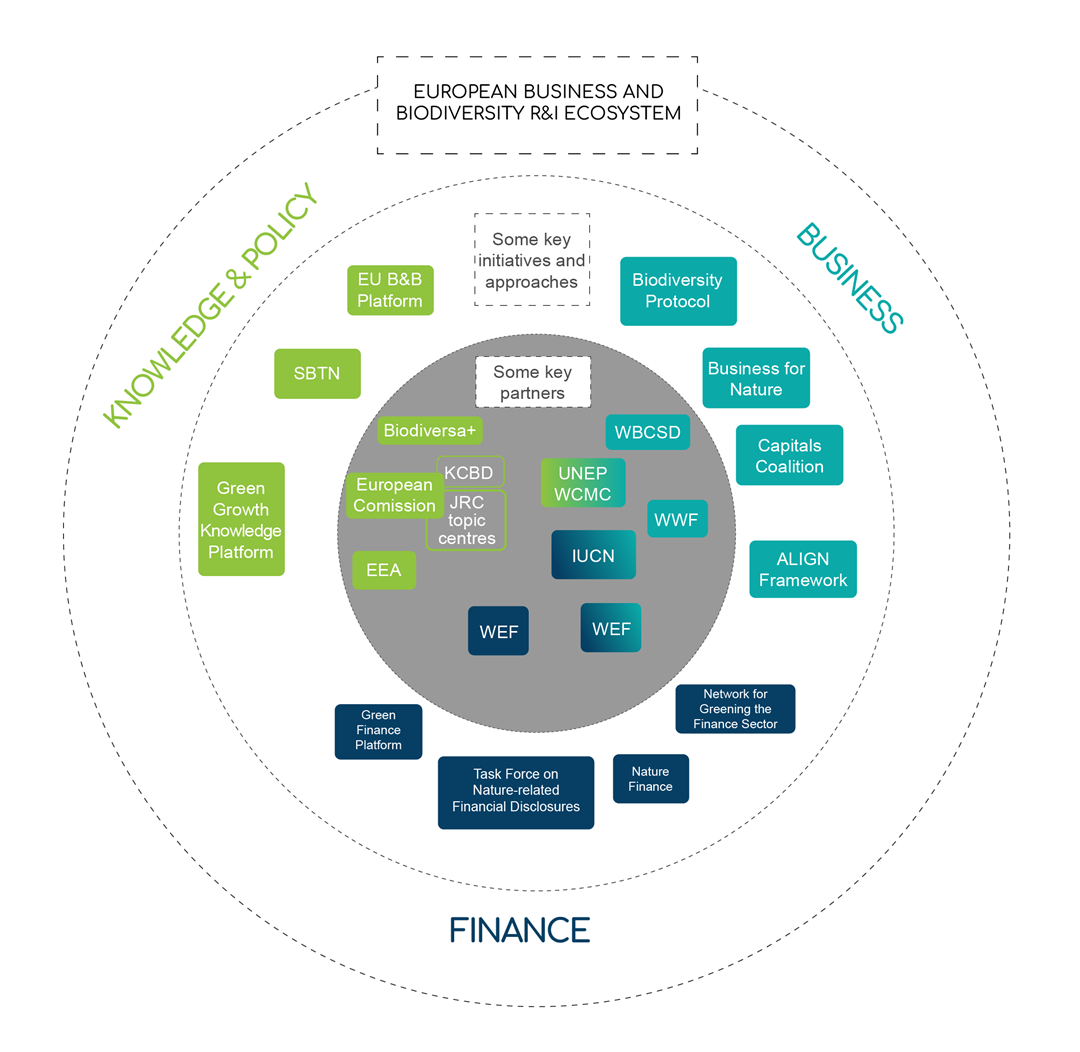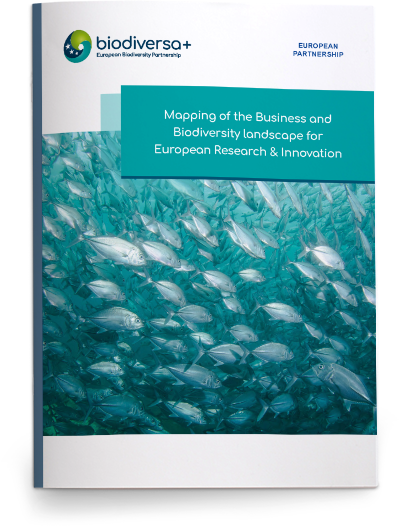“Mapping of the Business and Biodiversity Landscape for European Research & Innovation”
Published: October 2025 | DOI: 10.5281/zenodo.17396791
Businesses and finance play a critical role in reversing biodiversity loss. This report explores how research, policy, and business actors can work together to align Europe’s economy with nature protection goals.
Find your takeaways
It’s time for companies to fully embrace biodiversity as a strategic asset and a necessity for resilience.
- Take the lead on Nature: Embed biodiversity action into your core business strategy. Start by rigorously assessing and publicly disclosing your impacts and dependencies on nature.
- Future-proof your team: Invest in the expertise and capacity needed to meet new, mandatory reporting standards and secure your competitive edge.
- Innovate together: Forge direct partnerships with researchers to access cutting-edge knowledge and strengthen your overall biodiversity profile.
Your role is pivotal. By steering capital, you can accelerate the shift to a nature-positive economy.
- Green your portfolio: Make biodiversity screening a core part of all investment decisions, actively steering capital towards nature-positive activities and away from harm.
- Set the standard: Integrate biodiversity across your entire investment strategy, ensuring your institutional goals align with both EU and global nature targets.
- Build the expertise: Grow your in-house biodiversity knowledge and leverage existing tools and metrics to assess environmental risk and opportunity effectively.
Your work is fundamental. We need science that informs, validates, and drives real-world business decisions.
- Ground the action: Sustain crucial basic biodiversity research to fill fundamental knowledge gaps. Embrace interdisciplinary studies that seamlessly connect ecology with economics and social sciences.
- Develop the metrics: Accelerate the creation of robust methods and guidance for assessing and validating corporate biodiversity trends and dependencies.
- Focus on specifics: Recognise that biodiversity is unique and local; refine and prioritise site-based assessments over the search for a single, universal metric.
- Bridge the gap: Engage directly with the private sector to ensure your research results directly inform and elevate their business and policy action.
You hold the key to leveraging the business-biodiversity agenda and scaling up impactful research.
- Catalyse collaboration: Actively fund research that fosters robust engagement and knowledge transfer between scientists, the private sector, and financial institutions.
- Target impact: Prioritise funding for interdisciplinary projects that directly address the business-biodiversity nexus, including dedicated twinning initiatives.
- Scale success: Invest in developing and showcasing compelling best practices and detailed case studies to make responsible, nature-positive business the clear industry benchmark.
More insights
- Policy integration: The EU’s green policy framework connects economy and nature through instruments like the European Green Deal, EU Taxonomy, CSRD, and Nature Restoration and Soil Health Law, making biodiversity central to Europe’s economic transformation.
- Collaborative ecosystem: A growing network of institutions and partnerships fosters collaboration among businesses, researchers, and funders, driving the business-biodiversity agenda forward.
- Measurement & accountability: A wide range of tools now support biodiversity impact assessment. Selecting robust, context-sensitive methods and ensuring reliable data is key to fair evaluation, informed investment, and accountability.
SMEs account for the vast majority of EU enterprises (99%) and generate nearly half of the total turnover, making their engagement essential in addressing the biodiversity crisis. Several points of attention are particularly relevant:
- Limited capacity: SMEs have significantly fewer resources than large companies to invest in capacity building, hire external expertise, or manage EU reporting obligations and other regulatory demands.
- Value chain exposure: While new EU regulations on biodiversity initially target large companies, SMEs are increasingly affected due to their role in the value chain, for example, through reporting and disclosure requirements imposed by larger partners.
- Need for tailored support: Existing alliances and initiatives often focus on large multinationals, leaving SMEs’ specific needs insufficiently addressed. SMEs benefit from simplified, targeted guidance (such as EFRAG’s VSME, and Nefco’s Biodiversity Pilot Programme) and local network support to start managing their environmental impacts effectively.
- Nature-based opportunity: SMEs can play a pivotal role as Nature-based Enterprises (NbEs), providing products and expertise for Nature-based Solutions (NbS) and accessing a significant market niche.
Despite rapidly growing biodiversity knowledge, major gaps persist in data coverage, ecosystem valuation, and practical applications for businesses. Key priorities include:
- Knowledge gaps: Major gaps remain in understanding genetic diversity, species interactions, and ecosystem functions.
- Business alignment challenges: Companies struggle to align with biodiversity policies and require better data flows, indicators, and tools to assess impacts across scales.
- Tool and metric harmonisation: Inconsistent tools and metrics must be harmonised to prevent greenwashing and enhance credibility in biodiversity reporting.
- Capacity building: Especially for SMEs, capacity building is crucial to enable transformative change and bridge gaps between research and business.
- Pilot projects and local initiatives: Demonstrating best practices, building trust, and making biodiversity action operational for companies requires concrete pilot projects and local initiatives.
Explore the landscape
No results found. Try adjusting your filters or search term.


